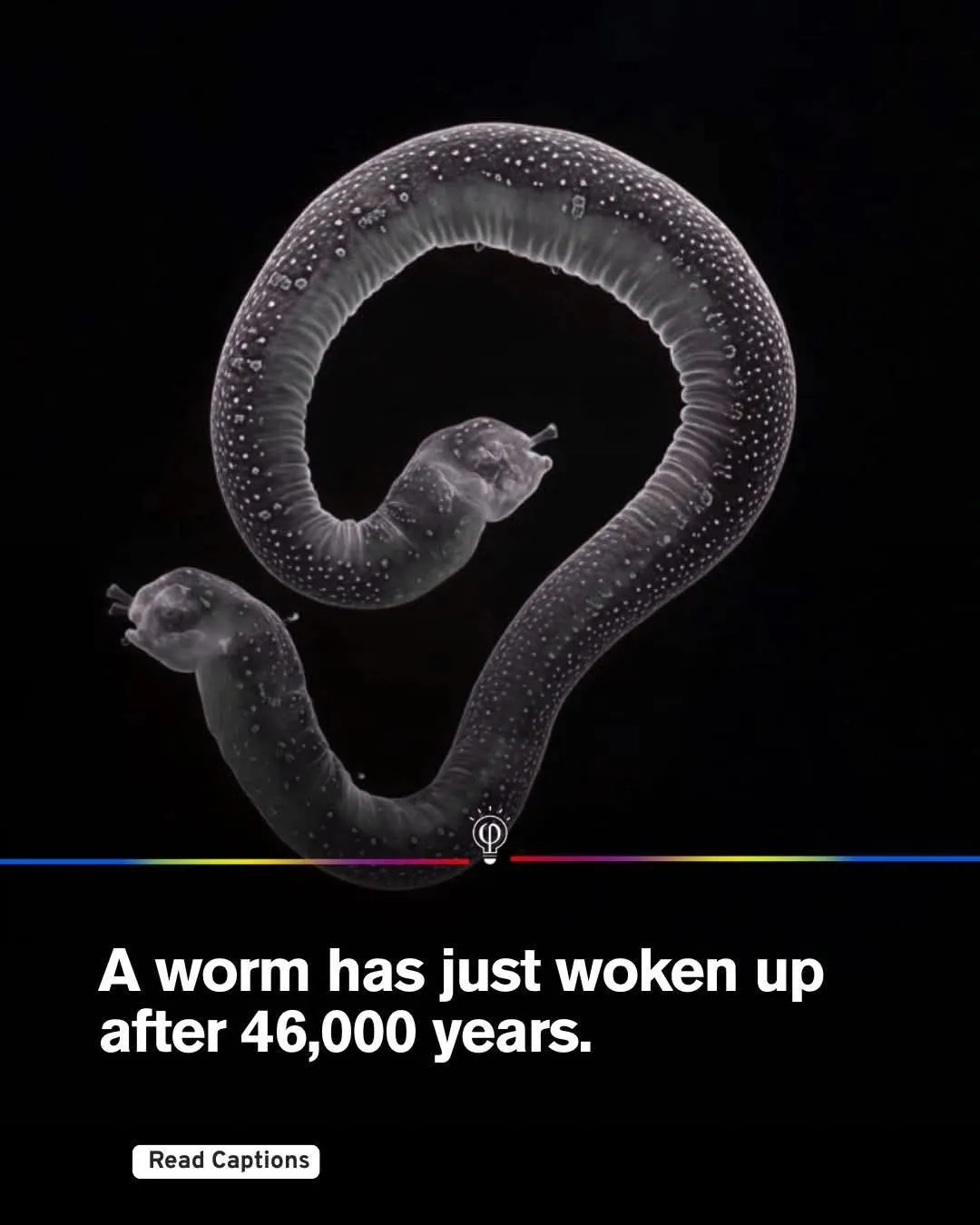Environnement et écologie
Un ver se réveille 46 000 ans après
Le post
Voir sur
A tiny worm named #Panagrolaimus #kolymaensis stunned scientists after it #revived from a #46000year slumber in #Siberia’s £permafrost.
Once thawed, the ancient nematode began moving, feeding, and even reproducing.
Scientists believe it survived by entering a #cryptobiotic state—essentially shutting down its metabolism and using protective molecules like trehalose to endure extreme conditions.
This remarkable discovery could reshape our understanding of life’s limits on Earth and the potential for survival in space or other planets.

Le débunk
✅ It's true
This phenomenon was described in an article published by PLOS Genetics in 07/23: https://tinyurl.com/kcrbe7de
However, it's worth noting that he authors of the study seem to have measured the age of the permafrost in which the worms were found, not the age of the worms themselves. So, it's possible the worms entered the permafrost more recently: https://tinyurl.com/2zfm649k
Other organisms are also capable of this kind of feat, the record goes to a bacterium found in the abdomen of a bee fossilised in amber, brought back to life after 25 to 40 million years: https://tinyurl.com/4hmzuwz7
The mechanism used by the nematodes, called cryptobiosis, has been reproduced in the lab, and once reawakened, the worms resume normal life. But they aren’t “coming back to life” in the same way as the bacterium mentioned above, they simply survive for a long time in a form of stasis.
A slight dehydration before freezing at –80°C causes the cells of these worms to produce a sugar called trehalose, which is believed to help them withstand both severe dehydration and freezing: https://tinyurl.com/y5w2prp7
Unfortunately, trehalose is toxic to humans, so it won’t be of much help for space travel.
https://cvc.li/yKuPw
Ebauche en français :
✅ C'est vrai, ce phénomène a été décrit dans un article publié par PLOS Genetics en juillet 2023 : https://tinyurl.com/kcrbe7de
il faut quand même noter quelques controverses. En effet, les auteurs de l'étude semblent avoir mesuré l'âge du permafrost dans lequel ils ont trouvé les vers et pas celui des vers eux-mêmes. Ceux-ci auraient donc pu arriver plus récemment dans le permafrost : https://tinyurl.com/2zfm649k
D'autres organismes sont capables de ce type de prouesse, le record revenant à une bactérie retrouvée dans l'abdomen d'une abeille fossilisée dans l'ambre, ramenée à la vie après 25 à 40 millions d'années : https://tinyurl.com/4hmzuwz7
Le mécanisme mis en oeuvre par les nematodes, appelé cryptobiosis, a pu être reproduit en laboratoire, et les vers une fois réveillés reprennent une vie normale. Durant cette cryptobiosis, leur métabolisme est réduit à un niveau indétectable mais ils restent vivants. Ils ne reviennent donc pas à la vie comme la bactérie ci-dessus.
Une déshydratation lègère avant congélation à -80°C conduit les cellules de ces vers à produire un sucre appelé tréhalose qui leur permettrait de supporter à la fois une déshydratation sévère et le froid : https://tinyurl.com/y5w2prp7
La tréhalose est toxique pour l'homme :(
Vous avez une question, une remarque ou une suggestion ? Contactez-nous en en indiquant le titre du débunk. Nous vous répondrons au plus vite !
Contactez-nous
